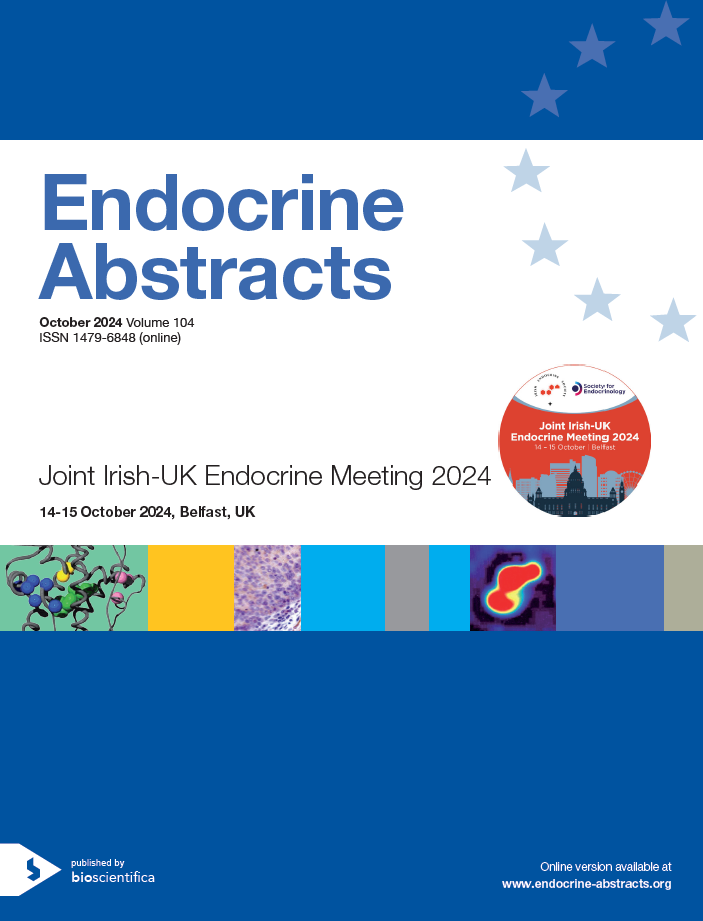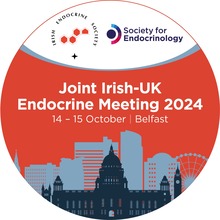
Joint Irish-UK Endocrine Meeting 2024
Belfast,
Northern Ireland
14 Oct 2024 - 15 Oct 2024

Oral Communications
Case Report Oral Communications
ea0104cr1 | Case Report Oral Communications | SFEIES24
Refractory hypercalcaemia in advanced metastatic pancreatic neuroendocrine tumour controlled on weekly denosumab
Wen Loh Ee , Masuka Shamiso , Wadsley Jonathan , Sabbagh Ahmad , Davies James , Newell-Price John
ea0104cr2 | Case Report Oral Communications | SFEIES24
Use of radiofrequency ablation (RFA) in the management of thyroid nodules – a single centre experience
Ludgate Stephen , Dennehy Gina , McGowan Anne , Govender Pradeep , Gibney James
ea0104cr3 | Case Report Oral Communications | SFEIES24
Adrenocorticotropin (ACTH) independent cushing’s syndrome in pregnancy secondary to overproduction of adrenal luteinizing hormone/human chorionic gonadotropins receptors
Jabeen Misbah , Yousaf Raja Umar , Satti Naila
ea0104cr4 | Case Report Oral Communications | SFEIES24
Pregnancy induction with pulsatile gonadotropin releasing hormone pump (GNRH) therapy in a patient with a KISS1 receptor mutation associated normosmic congenital hypogonadotropic hypogonadism and a very low anti-mullerian hormone: a case study
Carthy Brian , Owens Lisa , Ann Behan Lucy , Tuthill Antoinette
ea0104cr5 | Case Report Oral Communications | SFEIES24
Gastrointestinal morbidity related to delayed diagnosis of pheochromocytoma
Kaur Sehemby Manjeet , Buch Harit
ea0104cr6 | Case Report Oral Communications | SFEIES24
GLP1 receptor agonist and sulphonylurea treatment in KCNJ11 permanent neonatal diabetes
Crowley Mairead , Roarty Sarah , O'Shea Helen , Hattersley Andrew , Byrne Maria



